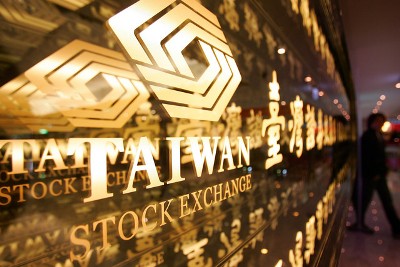Summary
Taiwan's fixed income ETF market is only 2 years old; yet it's already the largest in Asia
The growth owes to insurance companies dodging government-imposed caps on foreign investments
But also to the transparent and highly liquid structure fixed income ETFs offer
Although fixed income ETFs are relatively new for Taiwanese investors with only about 2-year of history in the island state, the funds have gathered critical mass with the growing demand from local institutional investors, boosting Taiwan to surpass South Korea to become the largest fixed income ETF market in Asia.
There have been 33 fixed income ETFs being launched in the Taiwan Stock Exchange or GreTai Securities Market, the over-the-counter (OTC) trading platform, over the past two years.
The market trajectory is not only evidenced by the rapid increase in new issuances, but the product scope is becoming more diversified.
For example, Yuanta Securities Investment Trust Co, the largest ETF manager in Taiwan, launched the island state's first China bond product, the Yuanta China Treasury + Policy Bank 3-5 Year Bond ETF in February while its rival Fubon Asset Management rolled out a similar product- the Fubon China Policy Bank Bond ETF.
Currently, 10 of the 33 ETFs are structured to track US Treasuries benchmark indexes, while seven mirror the performance of China policy financial bonds, and the balance are corporate debt, emerging market bond and high yield bond focused ETFs.
Assets wise, the ETFs tracking US treasuries had an aggregate of NT$68.5 billion (US$ 2.2 billion) in total AUM as of September, representing the largest shares of 32% in the market. They were closely followed by China policy financial debt ETTs, which had total assets of NT$65.3 billion equivalent to 31% in market shares.
From the new supply perspective, products in the pipeline are expected to be consistent going forward as the Financial Supervisory Commission (FSC), the financial regulator in Taiwan, has granted the approval for 15 of such products.
With the robust listing and trading activities, Taiwan domiciled fixed income ETFs' total AUM soared 441.5% to about NT$204.1 billion as of September from NT$37.7 billion in December 2017, according to figures from Taiwan fund industry body Securities Investment Trust and Consulting Association (SITCA).
Eva Lin, a senior fund manager of Cathay Securities Investment Trust Co, points out Taiwan's fixed income ETFs have been growing considerably over the past two year that the market now accounts for 38% of total Asia fixed income ETF assets.
"Taiwan has overtaken South Korea [in AUM] this September as the largest fixed income ETF market in the Asian region," Ms Lin points out.
Ms Lin attributes the phenomenal growth to multiple factors, and one of the impetuses is the regulatory control on insurance investments.
In 2014, the FSC stipulated Taiwanese financial institutions including insures to reallocate part of their overseas assets back to domestic markets, and the overseas investment position for insurers is capped at 45% of total assets.
However, the constraint is not applicable to fixed income ETFs, so many life insurers, which sit on substantial amount of insurance assets, are able to circumvent the foreign fixed income limit by using ETFs.
As a result, Taiwanese insurers have become the major driving force for fixed income ETFs.
Ms Lin identifies tax concession as another key driver, noting that the Taiwanese government has introduced tax incentives to encourage ETF trading at which the transaction tax for ETF is only one third of that for equities.
Meanwhile, Taiwanese investors find fixed income ETFs more appealing with its high liquidity, transparent trading mechanism, risk diversification, and efficiency for asset allocation, she adds.
From the institutional investor standpoint, Ms Lin cites a research from Jane Street in 2017 that more assets owners tend to use the ETFs for various purposes such as tactical adjustment, core allocation, risk management, liquidity management, cash equalisation, and portfolio rebalancing.
From the global perspective, Ms Lin observes that fixed income ETFs have been gaining traction from institutional investors worldwide.
For example, the National Association of Insurance Commissioners (NAIC), the US insurance standard-setting organisation, has implemented a stator account change, which allows insurers more flexibility when reporting fixed income ETFs in their portfolios.
The regulatory loosening has helped US fixed income ETF total AUM grow from about US$200 billion in 2010 to US$600 billion as of September 2018.




